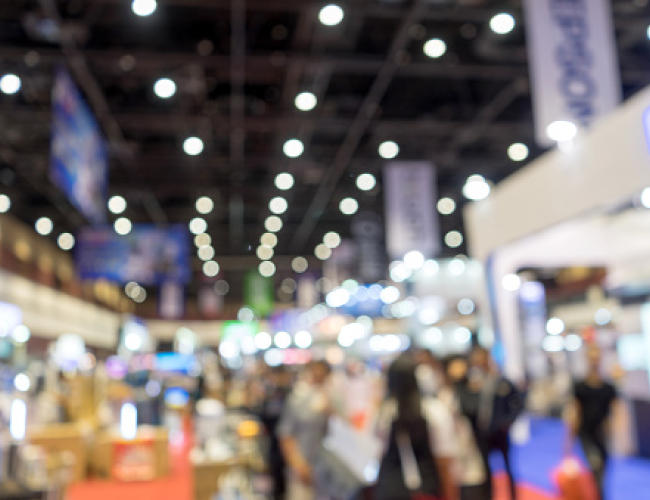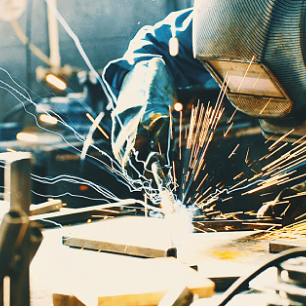Welding Digest
Jump to:
Welding Journal Research Supplement / 2024 Mid-Year Report
EDITOR’S CORNER
Dear WJRS Readers:
A listing of the 26 papers that have been published online between January 2024 and June 2024 is provided below. All the papers are available for download free of charge at wjresearch.org or by clicking on their corresponding DOIs. We will provide a similar listing twice a year.
A WJRS portal is currently being developed for manuscript submissions and will be available soon. Please note that three types of manuscripts —WJRS letters, standard papers, and review papers — may be submitted to the WJRS for publication through the submission website editorialmanager.com/wj. Comments on papers published in the WJRS are invited and will be published here along with authors’ responses.
If you have questions, please email wjrs@aws.org. Thank you for supporting this effort.
Thomas J. Lienert, Peer Review Editor
The following is a list of the Welding Journal research papers published between January 2024 and June 2024
1. Influence of Boron on Stress-Relief Cracking Susceptibility of T23 Steel
The effects of increasing boron content levels in the coarse grain heat-affected zone are analyzed
BY D. ZHANG AND X. WANG
https://doi.org/10.29391/2024/103.001
2. Intelligent Prediction of FSW Physical Quantity and Joint Mechanical Properties
A method for achieving high-precision prediction of weld tensile strength of aluminum alloy 2219-T8 thick plate is proposed
BY X. H. LU, F. M. ZENG, Y. H. LUAN, AND X. Y. MENG
https://doi.org/10.29391/2024.103.002
3. Effect of Electron Beam Oscillation Welding of Molybdenum and Titanium
The microstructure, element distribution, chemical composition, microhardness, and tensile strength of the welded joints were analyzed
BY X.-M. SHI, D.-F. MO, T. ZHAO, Y. ZHANG, W. SUN, H. GONG, AND X. LI
https://doi.org/10.29391/2024.103.003
4. Keyhole Welding with Hybrid Plasma-Free Arc Source
A new method for improving keyhole welding stability was explored
BY Z. LIU, F. LIU, AND J. QIU
https://doi.org/10.29391/2024/103.004
5. Multiphysics Simulation of In-Service Welding and Induction Preheating: Part 1
A FEM to simulate in-service welding qualification considering induction preheating and fluid flow in a coupled solution is presented
BY K. C. RIFFEL, R. H. G. E SILVA, A. J. RAMIREZ, A. F. F. ACUNA, G. DALPIAZ, AND M. T. P. PAES
https://doi.org/10.29391/2024.103.005
6. Characterization of As-Welded Microstructure in a P91 Steel
MX precipitate identity and the presence of retained austenite are potential factors to consider for Type IV cracking occurrence
BY A. L. MARZOCCA, F. SOLDERA, M. ZALAZAR, C. A. DANÓN, AND M. I. LUPPO
https://doi.org/10.29391/2024.103.006
7. Cutting and Shield Gases Pressure Effects on Plasma Cutting Quality
Experimental observation of kerfs obtained with varying current and shield and cutting pressures
BY S. CHABERT, J. J. GONZALEZ, AND P. FRETON
https://doi.org/10.29391/2024.103.007
8. Multiphysics Simulation of In-Service Welding and Induction Preheating: Part 2
Part 2 complements the FEM developed in Part 1 by comparing simulated welding results with experiments to validate the model
BY K. C. RIFFEL, R. H. G. SILVA, A. J. RAMIREZ, A. F. F. ACUNA, G. DALPIAZ, AND M. T. P. PAES
https://doi.org/10.29391/2024.103.008
9. Effect of Wire Preheat and Feed Rate in X80 Steel Laser Root Welds: Part 1 — Microstructure
The effects of using hot-wire-fed laser welding to promote the formation of acicular ferrite in X80 welds were investigated
BY H. YANG, J. CHEN, N. HUDA, X. ZHAO, and A.P. GERLICH
https://doi.org/10.29391/2024.103.009
10. Effect of Wire Preheat and Feed Rate in X80 Steel Laser Root Welds: Part 2 — Mechanical Properties
A hot-wire feed can reduce weld metal hardness and improve the toughness of X80 laser welds
BY H. YANG, J. CHEN, N. HUDA, X. ZHAO, AND A.P. GERLICH
https://doi.org/10.29391/2024.103.010
11. A State-of-the-Art Review on Direct Welding of Polymer to Metal for Structural Applications: Part 1 — Promising Processes
BY A. S. KHAN, P. DONG, F. LIU, AND Y. ZHANG
https://doi.org/10.29391/2024.103.011
12. Comments on the Numerical Models for Correlating Weld Metal Composition to Microstructure and Properties
Microalloying elements effects need to be considered in consumable design rules
BY G. M. EVANS, M. A. QUINTANA, AND S. S. BABU
https://doi.org/10.29391/2024.103.012
13. A State-of-the-Art Review on Direct Welding of Polymer to Metal for Structural Applications: Part 2 — Joint Design and Property Characterization
Direct welding of polymer to metal is not only possible; it also shows potential for applications in mass-production nvironments
BY A. S. KHAN, P. DONG, F. LIU, AND Y. ZHANG
https://doi.org/10.29391/2024.103.013
14. An Analytical Model of Material Deformation During Friction Welding of Alloy 718
Model for rotary friction welding exhibits a higher strain rate in material flow
BY C. BROWN, T. W. NELSON, AND C. D. SORENSON
https://doi.org/10.29391/2024.103.014
15. Evolution of Advanced Process Control in GMAW: Innovations, Implications, and Application
Attempts to understand the original GMAW process, significant developments and trends in process control, and applications of intelligent GMAW are discussed
BY J. NORRISH
https://doi.org/10.29391/2024.103.015
16. Estimation of Bead Size and Catchment Efficiency in Laser Cladding
Cladding procedure variables can be estimated from first principles
BY N. K. RAMASAMY, G. WOOD, Y. Lu, AND P. F. MENDEZ
https://doi.org/10.29391/2024.103.016
17. Postweld Heat Treatment on the Toughness of Electric-Resistance Welded X70 Steel
The effect of peak temperatures during PWHT on impact toughness at low temperatures of HF-ERW X70 pipeline welds is investigated
BY K. RAVIKIRAN, L. LI, N. K. SHARMA, N. ANDERSON, Y. WANG, S. D. CHOUDHURY, N. SAINI, AND M. RASHID
https://doi.org/10.29391/2024.103.017
18. Blue Laser Conduction Welding of Dissimilar Cu and Al Sheets
This work demonstrates that blue laser has great potential for joining 0.6 mm Cu and 0.6 mm Al sheets for new energy applications
BY Z. TANG, H. YANG, L. WAN, P. REN, X. ZHANG, Y. WU, H. WANG, AND H. WANG
https://doi.org/10.29391/2024.103.018
19. Monitoring Welding Torch Position and Posture Using Reversed Electrode Images – Part I: Establishment of the REI-TPA Model
A new method was developed to relate welding torch position and attitude to reversed electrode image on weld pool surface during GTAW
BY Y. FU AND S. B. CHEN
https://doi.org/10.29391/2024.103.019
20. The Formation Mechanism and Suppression Strategies of Spatter in Pulsed Gas Metal Arc Welding for Titanium Alloy
The mechanism underlying spatter formation and effective strategies to suppress spatter were explored
BY Z. ZHENG, S. WU, L. FAN, H. WU, AND F. CHENG
https://doi.org/10.29391/2024.103.020
21. Monitoring Welding Torch Position and Posture Using Reversed Electrode Images – Part II, Experimental and Analysis for the REI-TPA Model
A new method was developed to relate welding torch position and attitude to reversed electrode images on the weld pool surface during GTAW
BY Y. FU, Q. LIU, R. XIAO, AND S. B. CHEN
https://doi.org/10.29391/2024.103.021
22. Postweld Heat Treatment of 15Cr-6Ni- 2Mo-1Cu Supermartensitic Stainless Steel Welds
A design guide enables optimization of PWHT for heat-affected zone hardness reduction with preservation of base metal yield strength
BY R. E. BAUMER, E. C. P. PESSOA, K. KRISHNAN, AND T. N. VU
https://doi.org/10.29391/2024.103.022
23. Cavitation Characteristics in Ultrasonic Soldering and the Erosion Effect
Cavitation is fundamentally responsible for the removal of the oxide layer during ultrasonic soldering, and its characteristics are studied with highspeed photography
BY Z. LI, Z. XU, B. ZHANG, AND J. YAN
https://doi.org/10.29391/2024.103.023
24. Laser-Directed Energy Deposition of Ti- Mo Biomaterials: Influencing Mechanisms of Molybdenum on Microstructure and Performance
Increasing or decreasing the amount of Mo affected formation and cohesive energies, grain refining efficiency, and other factors
BY D. SHU, L. ZHAO, D. WU, Y. GUO, Z. ZHANG, AND N. MA
https://doi.org/10.29391/2024.103.024
25. Microstructure-Linked Mechanical Properties of P91-Incoloy 800HT Dissimilar Metal Welds
The impact of multiple weld passes on microstructure in the heat-affected zone and weld fusion zone was investigated
BY V. BHANU, A. GUPTA, AND C. PANDEY
https://doi.org/10.29391/2024.103.025
26. The Effects of Preheating the Shielding Gas Used in Gas Tungsten Arc Welding
A methodology for studying the electric arc was proposed, evaluating the voltage-current, profile, and luminosity values
BY N. NOGUEIRA DA SILVA AND W. SADE
https://doi.org/10.29391/2024.103.026
Visit wjresearch.org to view and download more than 2200 welding research papers from 1970 until today.


